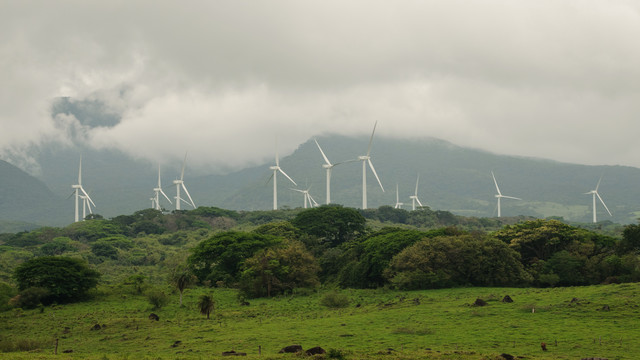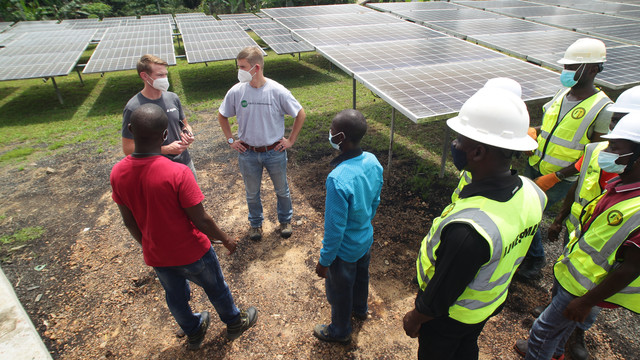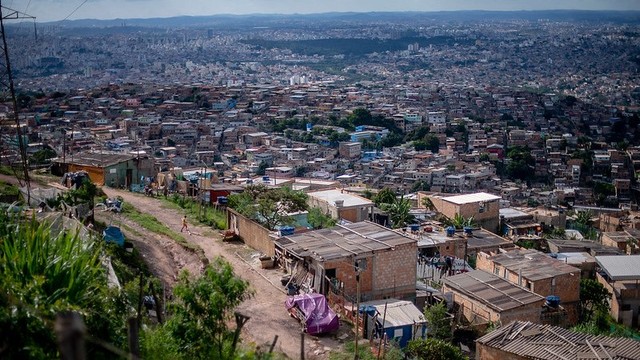Global goals for sustainable development
The final text of the Sustainable Development Goals marks an important advance for the international development community, but enormous challenges still lie ahead.

IIED produced an animation to raise awareness of the SDGs and the potential of the new development agenda (Image: IIED/Hands Up)
The final text of the Sustainable Development Goals (SDGs), Transforming our world, was released on 11 August, marking the completion of a process of drafting and negotiation that began more than two years ago.
For IIED, the SDGs are an important milestone on a four-decade journey in the cause of sustainable development. Far more than any previous international framework, the SDGs recognise the inter-relationships between human development and the environmental, economic, social and political context in which it occurs.
With 17 goals and 169 targets, the SDGs have been criticised as inelegant and unwieldy, but their scope is an accurate reflection of the breadth of action implicit in the concept of sustainable development.
Many of the goals are not new – the Millennium Development Goals (MDGs) also called for ending poverty (Goal 1), improving healthcare (Goal 3), achieving universal education, gender equality and access to water and sanitation (Goals 4-6), while other goals and targets are embodied in international agreements such as the United Nations Framework Convention on Climate Change (UNFCCC).
What makes the SDGs different is that there are also goals aimed at creating the conditions under which ending poverty, improving lives and protecting the planet are possible.
These goals include access to energy (Goal 7), inclusive economic growth and sustainable industrialisation (Goal 8-9), sustainable consumption and production (Goal 12) and so forth. It is these "enabling goals" that pull the SDGs together into a universal agenda for collective action that can achieve the vision of sustainable development.
While all the goals are important, and indeed inter-dependent, some have a particular resonance for IIED as they highlight issues that the institute has long championed but which have not formerly been given prominence, or in some cases even recognised, on international development agendas. These include:
- Goal 10: Reduce inequality within and among countries.
IIED’s mission to build a fairer, more sustainable world is premised on the belief, backed up by growing evidence, that inequality is a major driver of poverty, overconsumption and resource degradation. Goal 10 is perhaps the most radical of all the SDGs because it formally recognises the threat that growing inequality poses to efforts towards sustainable development and calls on all countries to take actions that may be politically challenging and unpopular, to reduce this dangerous trend. It will be difficult to implement, so will require strong systems of monitoring and accountability to keep countries on track
- Goal 11: Make cities and human settlements inclusive, safe, resilient and sustainable.
IIED has worked on urban issues for more than 40 years, and has often been a lonely voice in arguing that urban policy is an essential part of sustainable development policy. This recognition of the centrality of cities to sustainable human development is gratifying; although the lack of attention in the document to the role of local governments and community institutions in implementation raises questions about how the goal and its targets are to be achieved
- Goal 14: Conserve and sustainably use the oceans, seas and marine resources for sustainable development.
Global collective action on marine resources has been difficult to achieve because of the immediate economic benefits of unregulated use and the power imbalances among marine resource exploiting nations. IIED's work on fisheries has focused on the use of innovative economic solutions, including incentives that align ecological and social outcomes, to address the problems facing the fisheries sector, and to support healthy marine and coastal ecosystems and resilient fishing communities. Goal 14 and its targets can contribute to an improved policy environment for such approaches, but there will be a need to back up SDG aspirations with specific international agreements and actions
- Goal 15: Protect, restore and promote sustainable use of terrestrial ecosystems, sustainably manage forests, combat desertification, and halt and reverse land degradation and halt biodiversity loss.
The MDGs notoriously failed to deal with the terrestrial natural environment in any meaningful way, leaving that part of the development agenda to international and regional conventions, for example on biodiversity and land degradation. The SDGs eliminate that artificial divide, but IIED's work on forests and the SDGs suggests that addressing terrestrial ecosystems through a single goal understates the inter-relations between ecosystems and other aspects of the SDG framework. IIED researchers have proposed addressing the lack of integration through the application of a "modular approach" that packages together relevant targets and indicators from across all the SDGs.
The text to be agreed at the UN General Assembly in September can, for these reasons, be seen as holding great promise.
But sustainable development is difficult and complex, it involves balancing different priorities and interests. Implementing the SDGs is therefore a challenge for us all.
Tighe Geoghegan (tighe.geoghegan@iied.org) is a consultant working with IIED to coordinate aspects of work on the SDGs and post-2015 development agenda.



